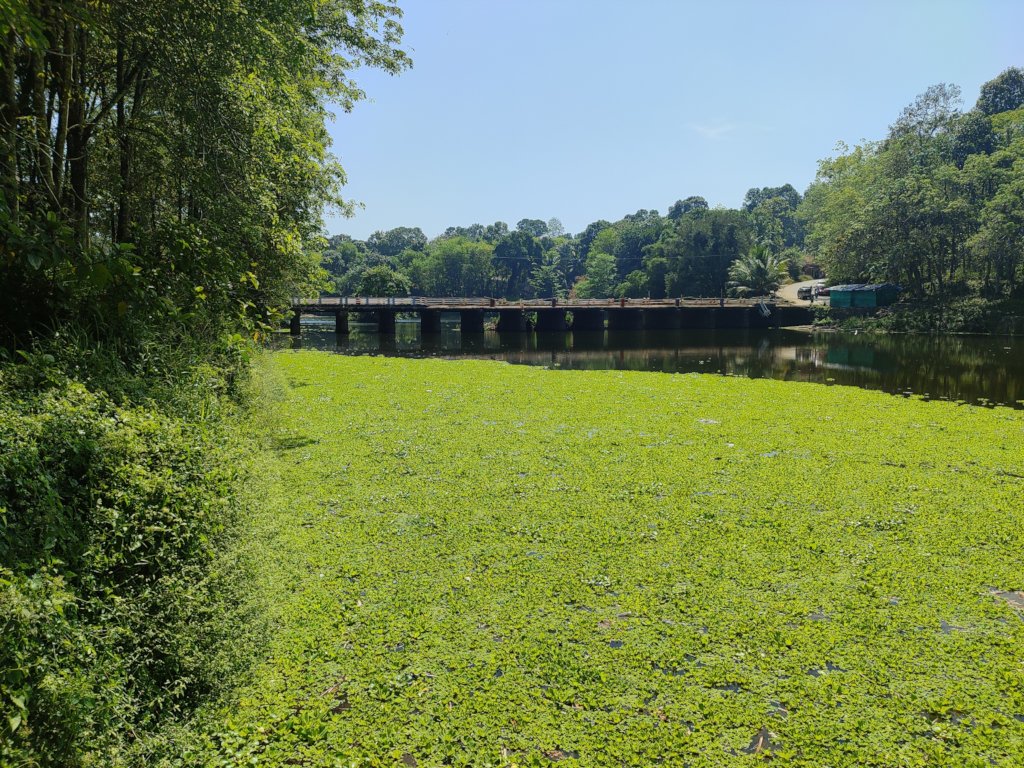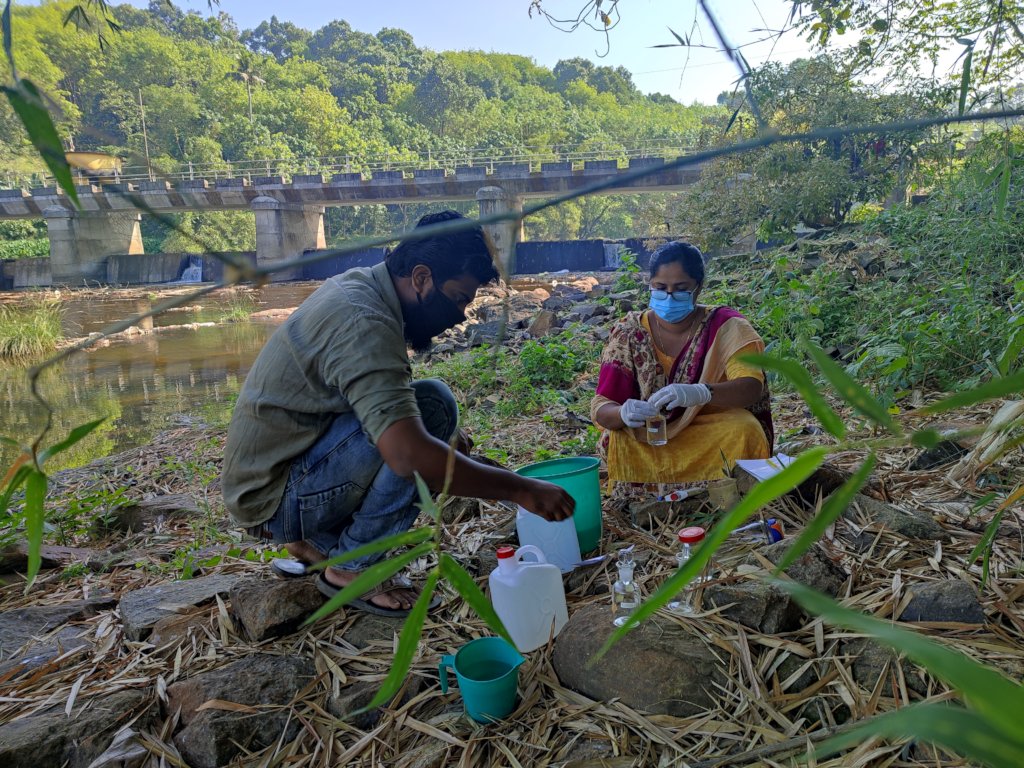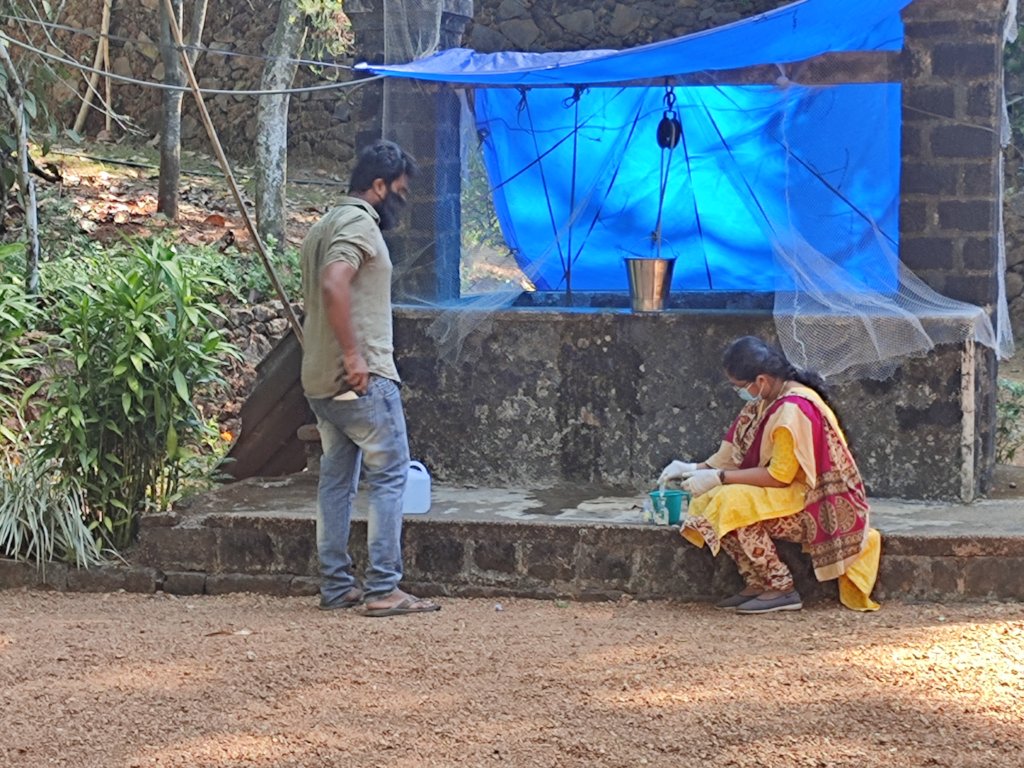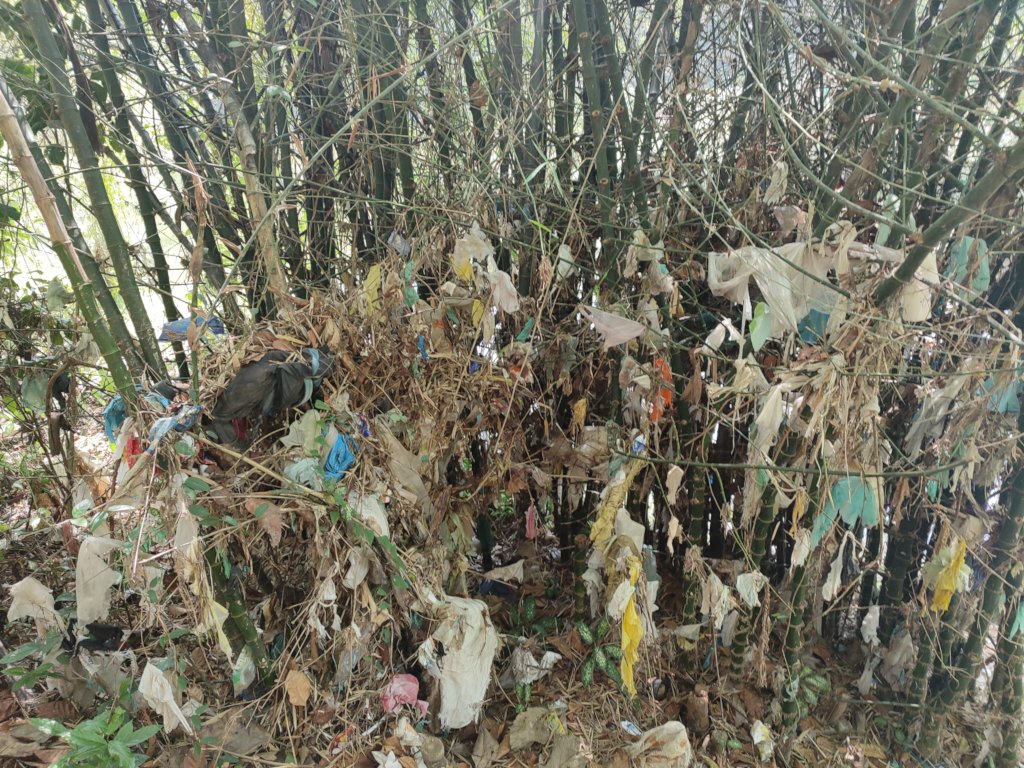By Roshni Susan Elias | Senior Scientist
Unabated pollution again made the Manimala River in news. Suspected pollution from a nearby rubber factory created panic among the riverine community. TIES as part of its conservation efforts tested water samples from 5 (Irukudil- Chenapady; open well; Koyikkall Kadavu; Pazhayidam Checkdam; Poothakuzhy Checkdam; Kanjirappally – Parathodu) locations at Manimala River and the parameters such as pH, conductivity, total dissolved solvents, salinity, acidity, alkalinity, chlorinity, total hardness, calcium ions, magnesium ions, total iron, sulphate, nitrate, chloride were found within the permissible limit in all the collected water samples. Fluoride content was found above the permissible limit in all the collected samples. It may be due to the leaching of fluoride ions from fluoride-containing rocks or soil into the river. But the Phosphate content was found above the permissible limit in the samples collected from Koyikkall Kadavu (Upstream of Karimpukayam Check Dam) and 26th mile bridge, Kanjirapally. It may be due to natural decomposition or from industrial discharge to the river. A rubber factory is working at Irukudil Close to Karimpumkayam. Water samples were collected from both upstream as well as downstream to find out the extent of pollution and it is shocking that the oil content was found above the permissible limit in all the collected samples and may be due to waste oil disposal or leakage from oil sources.
The Dissolved oxygen level is below the permissible limit at Koyikkal Kadavu, Pazhayidam Check dam, Poothakuzhy check dam and in 26th mile bridge. The decline is due to the overconsumption of oxygen than it is produced, which indicates that the pollution level is high and is highly life-threatening for the life underwater. BOD level was found to be very high in all the collected samples. BOD directly affects the amount of dissolved oxygen in rivers and streams. The greater the BOD, the more rapidly oxygen is depleted in the stream. This means less oxygen is available to higher forms of aquatic life. The consequences of the high BOD are the same as those for low dissolved oxygen: aquatic organisms become stressed, suffocate, and die. Sources of BOD include leaves and woody debris; dead plants and animals; animal manure; effluents from pulp and paper mills, wastewater treatment plants, feedlots, and food-processing plants; failing septic systems; and urban stormwater runoff.The organic carbon count is also high at Kanjirapally -Parathodu region and it may be due to the effluents from the nearby workshops.
Rather than industrial and other anthropogenic reasons, faecal (human or animal excreta) contamination is also posing threat to river health. Total coliform count, faecal coliform count and E. coli were found above the permissible limit in all the collected samples. Even though India is declared as Open Defecation Free (ODF) the situation is certainly not. The lack of safer toilet technologies and faecal sludge management is the main reason for this. Faecal matter is received from nearby houses and hotels (which is constructed on the KK Road (Kottayam-Kumly Highway) side). This has resulted in the blooming of aquatic weeds like Pistia (Water lettuce) and Eichhornia (Water hyacinth).
The residents are worried that the continued contamination of the river could expose them to communicable diseases.
Project reports on GlobalGiving are posted directly to globalgiving.org by Project Leaders as they are completed, generally every 3-4 months. To protect the integrity of these documents, GlobalGiving does not alter them; therefore you may find some language or formatting issues.
If you donate to this project or have donated to this project, you can receive an email when this project posts a report. You can also subscribe for reports without donating.
Support this important cause by creating a personalized fundraising page.
Start a Fundraiser



